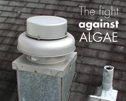One of the few bright spots in what has been a dreary six months for the U.S. economy is the plummeting price of oil. At press time, prices are around $40 per barrel, so it can be easy to forget oil was selling for more than $100 per barrel only a few months ago. Beyond the obvious benefit at the pump, we also should anticipate reduced prices for petroleum-based raw materials and—ultimately—finished goods, freight charges and other expenses.
But there is a downside to this situation: The financial motivation to adopt energy-efficient practices decreases with falling oil prices. The investment return from additional thermal insulation, high-performance heating systems, energy-efficient windows, etc., is different when oil trades at $38 per barrel versus $120 per barrel.
However, you should avoid basing your business decisions solely on the market price of oil. Expanding the basis on which you assess investment returns and payback periods can benefit your business.
Compelling studies
Franklin Associates Ltd., Prairie Village, Kan., recently completed a study analyzing the effects of installing 1 inch of foam plastic sheathing under wood siding in residential construction. The study compared the potential energy savings with the energy used to produce the foam.
Although results varied based on foam type, averaged nationally, all foams "paid back"—through resulting energy savings—the energy used to produce them in one to two years. In economic terms, a two-year payback would meet even the most conservative company's threshold return on investment.
And a recent report by Berkeley, Calif.-based Lawrence Berkeley National Laboratory (LBNL) quantified cool roofs' effects on greenhouse gas emissions and other pollutants. Taking into account different commercial building types and ages, cooling energy savings, heating energy penalties and local electricity emission factors (greenhouse gases, pollutants, etc.), among other parameters, the study simulated cool roofs in 236 U.S. cities.
According to LBNL's report, retrofitting 80 percent of the U.S.' commercial building conditioned roof area with such cool roofs would result in an annual carbon dioxide reduction of 6.23 million metric tons.
But producing cool roofing materials—or any materials for that matter—generates carbon dioxide. Excluding economic return, LBNL's premise only makes sense if the environmental return (overall effects on greenhouse gases) or payback is attractive.
Building on LBNL's work, Carbotech Inc., an environmental consulting firm based in Basel, Switzerland, was able to determine the estimated carbon dioxide payback period associated with the use of the cool thermoplastic vinyl roof membranes analyzed.
Averaged nationally, carbon dioxide reductions related to the energy savings resulting from the membranes' use would exceed the carbon dioxide generated during membrane production in less than two years. In other words, the environmental cost of carbon dioxide generation during manufacturing will generate an environmental return in carbon dioxide emission reductions which, on average, will result in a payback period of less than two years.
Similar to the foam plastic sheathing example, if this were measured in dollars rather than pounds of carbon dioxide, such an investment would be a no-brainer.
Fortunately, there seems to be a strong correlation between the economic and ecological benefits described in these examples. However, economic assessment always will be highly sensitive to market pricing for energy and other resources. Ecological analysis, on the other hand, likely will remain quite constant throughout an asset's life.
A foreseeable future
At this time, we are ill-equipped to make decisions based on parameters such as return on energy consumption or carbon dioxide reductions. However, I can foresee a day in the near future when investment decisions will be based on environmental, as well as financial, returns.
Stanley P. Graveline is vice president of technical services for Sika Sarnafil, Canton, Mass.


